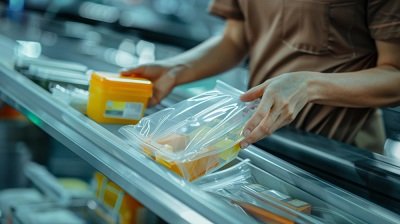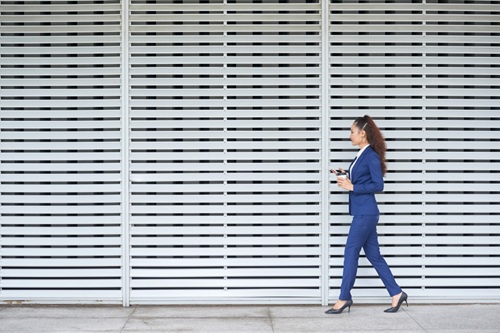Flexible packaging solutions, including materials like pouches, bags, and shrink films for packaging, have become increasingly popular in the retail sector. These solutions offer a balance of versatility, protection, and cost-efficiency that many retailers find indispensable. In today’s competitive retail environment, the ability to provide reliable packaging while maintaining a cost-effective approach is crucial. Flexible packaging allows businesses to achieve these goals while also enhancing their brand’s presentation and supporting sustainability efforts.
In this article, we’ll explore the top benefits of flexible packaging solutions and why they are an excellent choice for retail businesses.
1. Versatility and Adaptability
One of the major strengths of flexible packaging is its adaptability to various product shapes and sizes. Unlike rigid packaging, flexible materials can easily be customised to fit the specific needs of different products, making it suitable for a wide range of retail items, from food to electronics.
Benefits of Versatile Packaging:
- Customisation: Flexible packaging can be tailored in size, shape, and design, providing retailers with a multitude of options.
- Multiple Material Choices: You can choose from different flexible materials like plastic, paper, or aluminium, depending on the level of protection required.
- Shrink Films for Packaging: These films are widely used in retail to bundle or protect products. Shrink films ensure a snug fit around items, providing extra protection and minimising the risk of damage during transport.
2. Cost-Effectiveness
Reducing costs is one of the main reasons why flexible packaging solutions have become so prevalent in retail. The lightweight nature of flexible packaging materials significantly reduces both material costs and shipping expenses.
Why Flexible Packaging is Economical:
- Lower Raw Material Usage: Flexible packaging generally uses fewer raw materials than traditional rigid packaging, translating into cost savings.
- Reduced Shipping Expenses: Since flexible packaging is lighter, it helps reduce transportation costs, especially when shipping bulk quantities over long distances.
- Storage Efficiency: Flexible packaging takes up less storage space, whether in a warehouse or on retail shelves, allowing businesses to save on storage costs.
3. Enhanced Product Protection
Despite its light weight, flexible packaging provides excellent protection for retail goods. Thanks to technological advancements, flexible materials are now stronger and more durable, ensuring that products remain intact and secure during shipping and handling.
Protective Features:
- Barrier Properties: Flexible packaging materials often include barriers that protect products from moisture, oxygen, and light, which is particularly important for food items.
- Tamper-Evident Features: Many flexible packaging solutions have tamper-evident seals, which provide consumers with confidence that the product is safe and intact.
- Shrink Films for Packaging: By using shrink films, retailers can create a tight, secure wrap around their products, adding another layer of protection, particularly during transit or on store shelves.
4. Environmental Benefits
Sustainability is an increasing concern for consumers, and flexible packaging is an eco-friendly option compared to traditional rigid packaging. By using less material, flexible packaging helps reduce the environmental impact of packaging waste.
Sustainability Advantages:
- Less Waste: Flexible packaging uses fewer raw materials, leading to less waste during production and disposal.
- Recyclable Options: Many flexible packaging materials are now recyclable, giving retailers an opportunity to promote their sustainability efforts.
- Lower Emissions: With lighter packaging, transportation becomes more efficient, reducing fuel consumption and carbon emissions.
5. Improved Branding and Marketing Opportunities
Packaging is not just about protection; it’s also a key tool for branding and marketing. Flexible packaging offers retailers the chance to design custom, visually appealing packaging that helps attract customers and reinforce brand identity.
How Flexible Packaging Boosts Marketing:
- High-Quality Printing: Flexible packaging allows for clear, high-resolution printing, which can be used to display logos, product details, and promotional messaging.
- Transparent Packaging: Many flexible packaging options, such as clear shrink films, allow consumers to see the product inside, enhancing transparency and trust.
- Consumer Interaction: Features like resealable zippers or easy-open tear notches improve the consumer experience and increase the likelihood of repeat purchases.
6. Convenience for Consumers
Consumers appreciate convenience, and flexible packaging delivers just that. Its lightweight design, portability, and user-friendly features make it an ideal choice for busy shoppers.
Why Consumers Prefer Flexible Packaging:
- Portable and Lightweight: Flexible packaging is easy for consumers to carry, making it perfect for products that people use on the go, such as snacks or personal care items.
- Easy to Open and Close: Many flexible packaging solutions include resealable features, allowing consumers to open and close the packaging multiple times without damaging it.
- Space-Saving: Flexible packaging is often more compact than rigid packaging, making it easier to store both at home and in retail spaces.
Conclusion
Flexible packaging solutions provide a host of benefits for the retail industry, from cost savings and enhanced product protection to improved branding opportunities and sustainability. With materials like shrink films for packaging adding an extra layer of protection and visual appeal, it’s clear why retailers are turning to these versatile solutions. By adopting flexible packaging, businesses can reduce costs, improve customer satisfaction, and contribute to a more sustainable future in retail.






